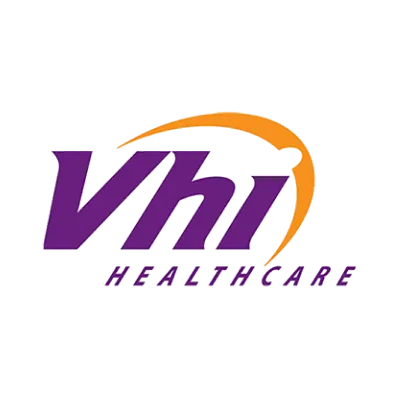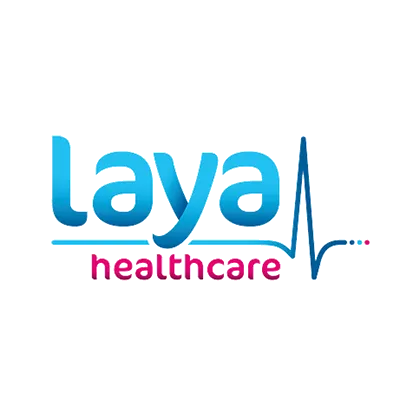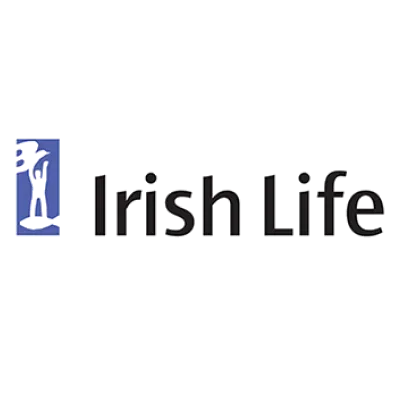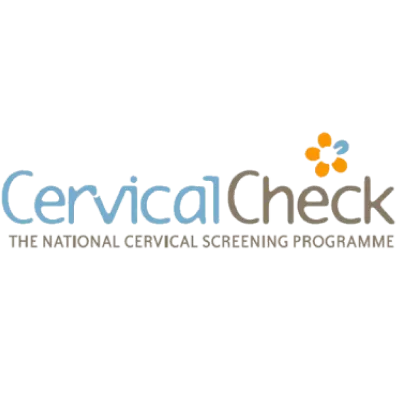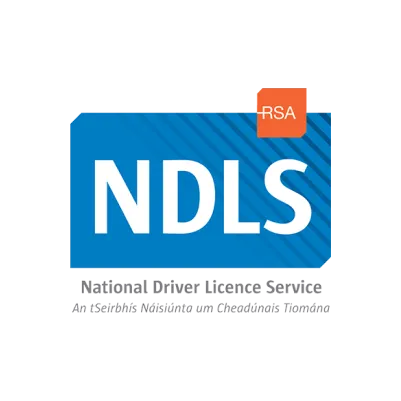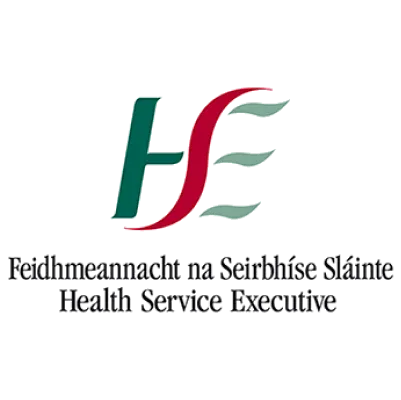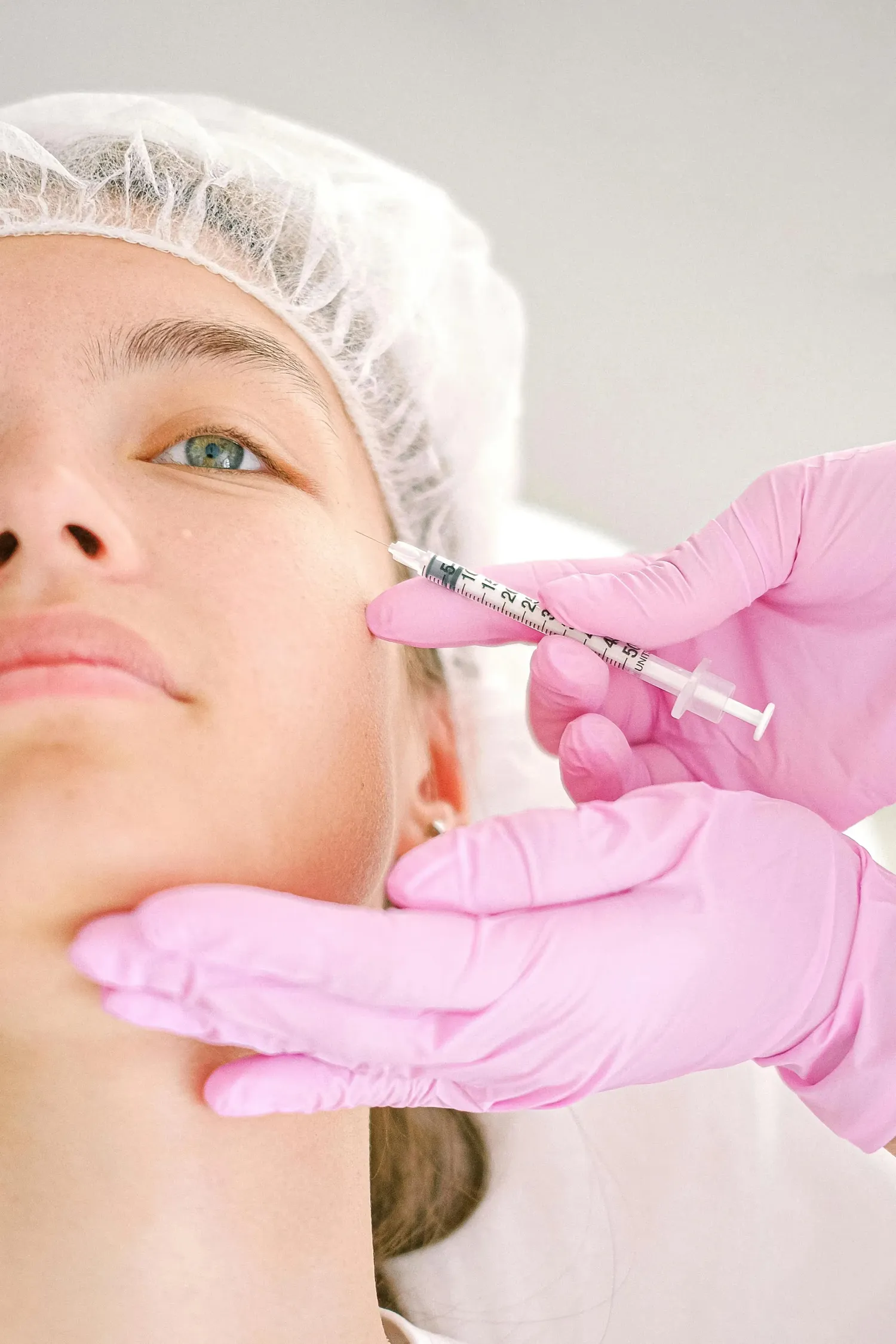
Healthy Heart Check-Up
- 30 minutes
- Detailed cardiac history and exam
- Cardiac related Fasting blood tests
- Biometric analysis
- Cardiac Risk factor stratification
Couch to 5K Check-Up
- 30 minutes
- Cardiac, Respiratory and Musculoskeletal Exam
- Fasting blood tests including cholesterol and blood sugar
- Biometric analysis
- Exercise programme planning
Healthy Heart and Cancer Screening Check-Up
- 45 minutes
- As above
- Cancer related history and exam including breast or prostate exam
- Cancer related blood tests
- Cancer risk stratification
- Skin assessment
Full Detailed Check-Up
- 1 hour check
- Both options as above
- Detailed health questionnaire
- Full detailed exam
Anti-wrinkle injections, using Botulinum toxin, are a quick, minimally invasive treatment. Typical areas of treatment include the forehead, crows feet around the eyes and the frown lines. There is no downtime, making this a convenient option for those seeking subtle, natural-looking rejuvenation.
Anti-wrinkle Injections FAQs
Normal facial movements create lines on our face. As we age, the collagen and elasticity of our skin reduces. These lines become more prominent and we start to develop more permanent lines on our face, wrinkles.
Anti-wrinkle injections use Botulinum toxin (Botox®, Azzalure®) to weaken or paralyse target muscles in the face to reduce these lines. The aim is always to continue to allow full facial movements but to weaken the muscle enough to reduce or eliminate these lines. A natural but refreshed look is our target.
Our clients range from mid twenties to those over sixty years. Both males and females are treated. Individualised care is important to ensure appropriate expectations and acceptable outcomes. BTX injections are not licensed in pregnant or breastfeeding individuals.
Botulinum toxin injections are contraindicated in certain medical conditions such as myasthenia gravis. If certain medications are prescribed (eg. Gentamicin) BTX is not advised.
While blood thinners and anti-inflammatories are not a contraindication, bruising can be expected to be more significant.
The average treatment lasts between 3-4 months. It is not recommended to get treatment earlier than every 12 weeks. Some like to let the effect of the treatment wear off before further treatments and allow longer between appointments. Others prefer to keep the effect topped up are more diligent with their 3 monthly appointment. An appointment takes 15 min.
Most individuals will get BTX in their upper face (forehead, frown lines and crows feet). However we can offer treatments in other areas too
- Gummy smile
- Downturned smile
- Teeth grinding / jaw slimming
- Lip flip
- Platysmal neck bands
- Dimpled chin
- Bunny lines
- Excessive underarm sweating
BTX does have many other uses in medicine such as muscle spasticity in cerebral palsy, in urology for urinary incontinence and in ophthalmic surgery such as in squint.

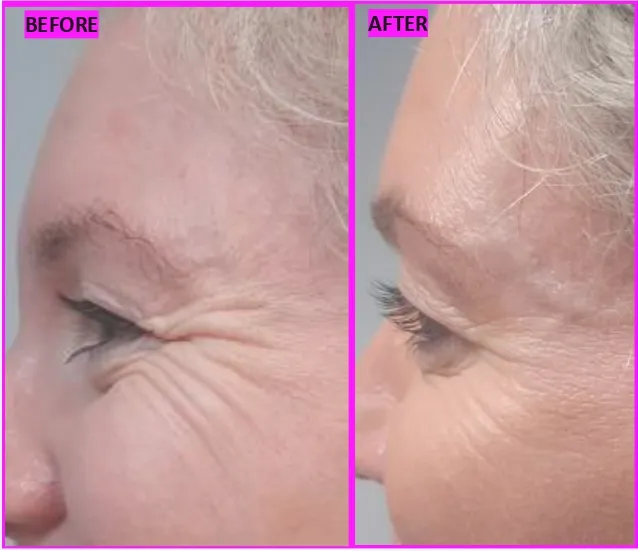
Platelet Rich Plasma (PRP) Joint Injection
Normal facial movements create lines on our face. As we age, the collagen and elasticity of our skin reduces. These lines become more prominent and we start to develop more permanent lines on our face, wrinkles.
Anti-wrinkle injections use Botulinum toxin (Botox®, Azzalure®) to weaken or paralyse target muscles in the face to reduce these lines. The aim is always to continue to allow full facial movements but to weaken the muscle enough to reduce or eliminate these lines. A natural but refreshed look is our target.
Our clients range from mid twenties to those over sixty years. Both males and females are treated. Individualised care is important to ensure appropriate expectations and acceptable outcomes. BTX injections are not licensed in pregnant or breastfeeding individuals.
Botulinum toxin injections are contraindicated in certain medical conditions such as myasthenia gravis. If certain medications are prescribed (eg. Gentamicin) BTX is not advised.
While blood thinners and anti-inflammatories are not a contraindication, bruising can be expected to be more significant.
The average treatment lasts between 3-4 months. It is not recommended to get treatment earlier than every 12 weeks. Some like to let the effect of the treatment wear off before further treatments and allow longer between appointments. Others prefer to keep the effect topped up are more diligent with their 3 monthly appointment. An appointment takes 15 min.
Most individuals will get BTX in their upper face (forehead, frown lines and crows feet). However we can offer treatments in other areas too
- Gummy smile
- Downturned smile
- Teeth grinding / jaw slimming
- Lip flip
- Platysmal neck bands
- Dimpled chin
- Bunny lines
- Excessive underarm sweating
BTX does have many other uses in medicine such as muscle spasticity in cerebral palsy, in urology for urinary incontinence and in ophthalmic surgery such as in squint.


Steroid Joint Injection
Fees
Steroid Injections
PRP Injections
(Platelet Rich Plasma)
Normal facial movements create lines on our face. As we age, the collagen and elasticity of our skin reduces. These lines become more prominent and we start to develop more permanent lines on our face, wrinkles.
Anti-wrinkle injections use Botulinum toxin (Botox®, Azzalure®) to weaken or paralyse target muscles in the face to reduce these lines. The aim is always to continue to allow full facial movements but to weaken the muscle enough to reduce or eliminate these lines. A natural but refreshed look is our target.
Our clients range from mid twenties to those over sixty years. Both males and females are treated. Individualised care is important to ensure appropriate expectations and acceptable outcomes. BTX injections are not licensed in pregnant or breastfeeding individuals.
Botulinum toxin injections are contraindicated in certain medical conditions such as myasthenia gravis. If certain medications are prescribed (eg. Gentamicin) BTX is not advised.
While blood thinners and anti-inflammatories are not a contraindication, bruising can be expected to be more significant.
The average treatment lasts between 3-4 months. It is not recommended to get treatment earlier than every 12 weeks. Some like to let the effect of the treatment wear off before further treatments and allow longer between appointments. Others prefer to keep the effect topped up are more diligent with their 3 monthly appointment. An appointment takes 15 min.
Most individuals will get BTX in their upper face (forehead, frown lines and crows feet). However we can offer treatments in other areas too
- Gummy smile
- Downturned smile
- Teeth grinding / jaw slimming
- Lip flip
- Platysmal neck bands
- Dimpled chin
- Bunny lines
- Excessive underarm sweating
BTX does have many other uses in medicine such as muscle spasticity in cerebral palsy, in urology for urinary incontinence and in ophthalmic surgery such as in squint.


Hyperhidrosis is a medical condition where an individual produces more sweat than is required to regulate temperature.
Sweating is a normal phenomenon that everyone experiences. In the majority of individuals, the use of anti-perspirant deodorant is sufficient to control this. However, for some this is not enough. When unpleasant sweat marks and body odour cause embarrassment, alternative options to anti-perspirants can be considered. These include medicated anti-perspirant or BTX injections
Using tiny needles, many injections of BTX are injected just under the surface of the skin in both armpits. This is not a particularly sensitive area, so pain is minimal. When injected into the skin, BTX blocks the transmission of a neurochemical responsible for stimulating the sweat gland.
The procedure takes about 30 mins in total. There is no downtime afterwards. The injections take a few days to start working. You can expect up to 80% reduction in sweating, you will not get 100% resolution. Results can last 8 months or longer.
Platelet rich plasma, or PRP, is a form of regenerative medicine. It utilises our body own natural healing powers to improve or enhance areas that need attention. PRP involves obtaining the platelets from one’s own blood and reinjecting them into the target site to promote healing and regeneration.
To obtain these platelets, a blood sample is taken and spun in a medical device called a centrifuge, to separate the blood components. The plasma which is now highly concentrated in platelets can be removed in a separate collection device and reinjected into the target area.
This platelet rich plasma has high levels of growth factors which aid in wound healing and tissue regeneration via a complex cellular cascade.
When reinjected into the skin, platelets stimulate production of growth factors to promote collagen production, naturally enhancing the texture and appearance of the skin. In our scalp, these growth factors encourage new hair growth. In injured joints, the growth factors stimulate wound healing.
As the blood being injected is from the same individual who supplied it, there is no risk of allergic reaction or transmission of blood borne infections. PRP uses your own cells to stimulate healing and growth. The healthier you are (diet, non-smoker, no drug use, age etc.) the more dramatic the results you will see.
PRP has many uses in area of sports medicine, vascular medicine, joint injury, wound and burn healing, skin rejuvenation and hair loss management. PRP involves obtaining the platelets from one’s own blood and reinjecting them into the target site to promote healing and regeneration.
In Flynn Medical Centre, we offer PRP for
Skin rejuvenation
The anti-aging effects of PRP are broad. Many areas can be targeted such as the face, neck, décolletage and back of hands.
Musculoskeletal
Improved healing of tendons, ligaments and muscles as well as improving symptoms of arthritis.
Hair loss
Many types of non-scarring hair loss can be treated using PRP including male and female pattern hair loss, post partum hair loss and others.
A sample of blood is taken from your arm. This is spun down, the platelets are extracted and reinjected in numerous small injection into the face, targeting areas of concern. A numbing cream is used in advance to minimize discomfort. The procedure takes approx one hour.
We aim to minimize pain but you may experience some mild discomfort during the procedure despite the numbing cream. Although we use very small needles, bruises can not always be prevented. Arnica tablets or cream can help with this.
You will start noticing an improvement in skin hydration within 1-2 weeks. By 6 weeks you will notice improved skin texture, brighter complexion, softening of fine lines and reduction in pigmentation. Results can last 18 months.
To optimize the outcome, it is recommended to repeat the procedure after 6-8 weeks for 3 sessions with a maintenance treatment every 6-12 months.
_page-0001.webp)
Platelet rich plasma, or PRP, is a form of regenerative medicine. It utilises our body own natural healing powers to improve or enhance areas that need attention. PRP involves obtaining the platelets from one’s own blood and reinjecting them into the target site to promote healing and regeneration.
To obtain these platelets, a blood sample is taken and spun in a medical device called a centrifuge, to separate the blood components. The plasma which is now highly concentrated in platelets can be removed in a separate collection device and reinjected into the target area.
This platelet rich plasma has high levels of growth factors which aid in wound healing and tissue regeneration via a complex cellular cascade.
When reinjected into the skin, platelets stimulate production of growth factors to promote collagen production, naturally enhancing the texture and appearance of the skin. In our scalp, these growth factors encourage new hair growth. In injured joints, the growth factors stimulate wound healing.
As the blood being injected is from the same individual who supplied it, there is no risk of allergic reaction or transmission of blood borne infections. PRP uses your own cells to stimulate healing and growth. The healthier you are (diet, non-smoker, no drug use, age etc.) the more dramatic the results you will see.
PRP has many uses in area of sports medicine, vascular medicine, joint injury, wound and burn healing, skin rejuvenation and hair loss management. PRP involves obtaining the platelets from one’s own blood and reinjecting them into the target site to promote healing and regeneration.
In Flynn Medical Centre, we offer PRP for:
Skin rejuvenation
The anti-aging effects of PRP are broad. Many areas can be targeted such as the face, neck, décolletage and back of hands.
Musculoskeletal
Improved healing of tendons, ligaments and muscles as well as improving symptoms of arthritis.
Hair loss
Many types of non-scarring hair loss can be treated using PRP including male and female pattern hair loss, post partum hair loss and others.
A sample of blood is taken from your arm. This is spun down, separating the platelets from the other blood components. The platelets are extracted and reinjected in numerous small injection in to the scalp targeting areas of concern. This is not a particularly sensitive area so pain is minimal.
The procedure takes approximately 45mins. We aim to minimize pain but you may experience some mild discomfort during the procedure. Although we use very small needles, a tiny amount of blood can be expected.
The aim of the growth factors in plasma is to invigorate dormant hair follicles and stimulate new growth. This can slow down hair loss, when repeated over time. It can also address areas of hair loss in both males and females and encourage regrowth of hair. Typically it would take between 3-6 months before seeing any noticeable difference.
Results can appear to be slow, as response relates to the hair growth cycle. PRP encourages more hairs to enter the anagen (or growth) phase. You will first notice a reduction in hair shedding and some new growth of hairs.
It is strongly recommended to have the procedure repeated every 4 weeks for three sessions. This should be followed by a maintenance treatment annually.
PRP is suitable for both males and females. It is safe and suitable for any age group, over 18 years of age.
While not every type of hair loss will respond to PRP, there is many types that will have significant responses. The healthier the individual (age, diet, non-smoker, no alcohol, no drug use), the more dramatic the response.
Many people chose to supplement with OTC nutrients to encourage hair growth. Biotin, Vitamin C, Vitamin D and iron all play roles in supporting adequate hair growth. Most individuals with a varied diet and no absorption issues will take in enough of these nutrients in their own diet. There is no specific recommendation to take these supplements but many people prefer to do so.
Platelet rich plasma, or PRP, is a form of regenerative medicine. It has many uses in area of sports medicine, vascular medicine, joint injury, wound and burn healing, skin rejuvenation and hair loss management. PRP involves obtaining the platelets from one’s own blood and reinjecting them into the target site to promote healing and regeneration.
Our blood is composed of red blood cells, white blood cells and platelets, all suspended in a liquid called plasma. When a blood sample is taken and spun in a medical device called a centrifuge, the blood components separate. Platelets are the lightest and hence come to the top of the collection bottle. This plasma which is now highly concentrated in platelets can be removed in a separate collection device and reinjected into the target area.
This platelet rich plasma has high levels of growth factors which aid in wound healing and tissue regeneration via a complex cellular cascade.
PRP is an important therapy in regenerative medicine. Regenerative medicine refers to the science of restoring or replacing damaged/injured tissue using the body’s own natural healing capabilities.
PRP has many uses:
Musculoskeletal
Improved healing of tendons, ligaments and muscles
PRP modifies the joint space in joints affected by osteoarthritis and reduces inflammation
- Sports injuries such as tendon, ligament or muscle tear
- Chronic tissue damaged associated with aging or over use
- Patients suffering with pain and stiffness associated with osteoarthritis
Hair loss
Hair growth occurs in cycles, with four stages. 85-90% of your hair strands should usually be in the active growth (anagen) stage. Only a small number of hair strands usually reside in the shedding (telogen) phase at any one time. This results in normal hair loss of 50 -100 hairs a day. This should not result in any noticeable hair loss.
Noticeable hair loss occurs when a larger proportion of hairs are in the shedding phase compares with typical
The growth factors in PRP encourage hairs to enter the anagen (growth) phase, awakening dormant hair follicles. This stimulates new hair growth.
Many types of hair loss can be treated using PRP
- Male pattern hair loss (Male Androgenic Alopecia)
- Women with hair loss post-partum (Postpartum Telogen Effluvium)
- Female pattern hair loss (Female Androgenic Alopecia)
Skin rejuvenation
The anti-aging effects of PRP are broad:
- PRP can be performed on the face, neck or hands
- This reduces the appearance of wrinkles, photodamage and dark circles under eyes
- Stimulating production of collagen improves skin volume and skin texture
Because PRP involves using your own blood, it is a natural and safe way to improve joint healing.
- PRP can alleviate pain secondary to joint damage;
- Encourage tissue healing (tendon, ligament, muscle);
- Postpone the requirement for joint replacement surgery.
The procedure is a simple one:
- A sample of blood is taken from your arm;
- This sample is spun in a centrifuge, separating the platelets from the other blood components;
- These platelets are removed into a separate syringe;
- The platelets are reinjected into the affected joint using sterile technique.
As it is your own blood that is being used, the risk of contamination or infection is minimal.
The whole procedure takes approx. 30mins.
Pain is minimal.
Results become most obvious after a few short weeks and these continue to improve over months.
For optimal results, two PRP treatments one month apart is recommended. The duration of effect can last between 6 and 12 months.
However results are highly variable between individuals but scientific research suggests results last longer than steroid injections.
The corticosteroid cortisol is a natural hormone produced by our adrenal glands, which has many effects that are essential to the correct and healthy functioning of our body. One of it’s functions is to dampen down and eliminate inflammation.
To aid in the management of many medical illness, corticosteroids are prescribed by doctors. This may be in the form of
- creams for skin conditions like eczema
- inhalers for treatment of asthma and other respiratory conditions
- tablets for managing a wide array of conditions
- joint injections for managing chronic painful conditions
This is only a very brief summary of some of the more common uses of steroids. They have many many uses in medicine.
Anabolic steroids used for muscle growth and strength are different to these described above.
Steroid joint injections are used as an adjunct to oral painkillers to manage chronic pain.
They are most typically used for
- injury (eg. Ligament strain)
- Inflammation (eg. Tennis elbow)
- Medical conditions (eg. Osteoarthritis)
Our doctors are trained and experienced in assessing those who are suitable for these injections.
- Postponing the need for surgery
- Reduced need for oral painkillers
- Longer lived response to pain when compared to oral painkillers
When corticosteroid is injected into the affected joint space, it reduces local inflammation leading to pain relief which can be long lasting.
The target joint needs to be exposed fully.
- The skin is cleansed with an anti-septic material to minimise risk of infection.
- A narrow needle is inserted into the joint space.
- A combination of corticosteroid and local anaesthetic is injected into the target joint.
- An adhesive dressing may be applied to the skin after the injection.
You can expect minimal pain and minimal bleeding during this procedure.
It takes between 15-30mins in total.
As local anaesthetic is injected with the steroid, results are rapid. You can expect pain relief the same day. As the anaesthetic starts to wear off, the corticosteroid will have started to take effect giving long lasting relief.
Results are widely variable. Some people get pain relief for many months, while others get short weeks. Some few get no appreciable effect at all. These results can be influenced by the extent of injury or damage in the affected joint, which joint is affected and use of joint in the following weeks or months.
It is recommended that no more than 3 to 4 injections in a joint in a 12 month period and these should be spaced out by appropriate intervals.

